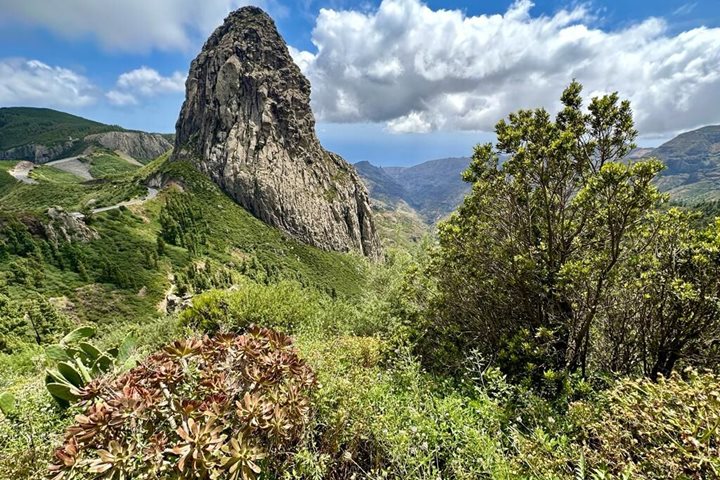We awoke to foggy conditions. Warmer air here meets the colder seas of the Falkland Current running north along the Argentine coast, slowing out progress south by about one knot from the previous days. Patagonia has become the archetypical ‘gap year’ destination for back-packers, even a clothing brand, helped in large part by Bruce Chatwin’s light travel memoir In Patagonia which was has run to multiple editions since it was first published in 1977. Patagonia was enormously influential in Darwin’s thought—its unusual fauna and flora and, above all, the abundance of fossils when he was out geologising made a lasting impression.
A generation after Darwin’s visit on board HMS Beagle, an unlikely group of prospective settlers arrived from Wales in the great bay to the south of the Valdes Peninsula to land where today the port of Puerto Madryn, a town with a sizeable aluminium smelting operation, references the home in north Wales of one of the patrons of the Welsh settlement in Patagonia, Captain Love Jones-Parry. Surviving their first winter very precariously in the shore-side caves and befriending the native tribesmen, the settlers subsequently moved across the pampas into the valley of the Rio Chubut which they settled and irrigated. Curiously today, the Chubut Valley is home to a community bilingual in Welsh and Spanish, the only place outside Wales where the Welsh language remains in everyday use. This was as the settlers intended when they set sail from Liverpool in the converted tea-clipper Mimosa in 1865, worried that the introduction of compulsory education through the medium of English would kill off the language in Wales itself and aware that emigrants to the United States tended to lose their mother tongue within just a couple of generations in the American “melting pot”. Trelew, named after another pioneer of the Welsh settlement, Lewis Jones, is home to one the most remarkable palaeontology museums in South America.
We hope soon to encounter Magellanic penguins. Curiously, dictionaries often give the etymology of penguin as coming from the Welsh pen, meaning head, and gwyn, meaning white, an inexplicable derivation in multiple ways, not least because penguins have black heads. It seems that it was Francis Drake who first made this suggestion in his account of his voyage of circumnavigation on board Golden Hind in the reign of Queen Elizabeth I in order to give the British a prior claim to the Americas over Spain and Portugal. He wanted it put about that the Welsh, the original British, had discovered the New World at an earlier date and that evidence for this existed in native vocabularies. A vegetable carving demonstration in the lounge this morning got us into penguin mood.
Today visitors to Patagonia can experience both Wales and whales, the Valdes Peninsula being a popular whale-watching destination especially at this time of year when the southern right whales gather there to give birth to their calves. Off the coast, sailing by, we were accompanied by numerous black-and-white painted (pintado) petrels, dark brown giant petrels and Peale’s dolphins.







